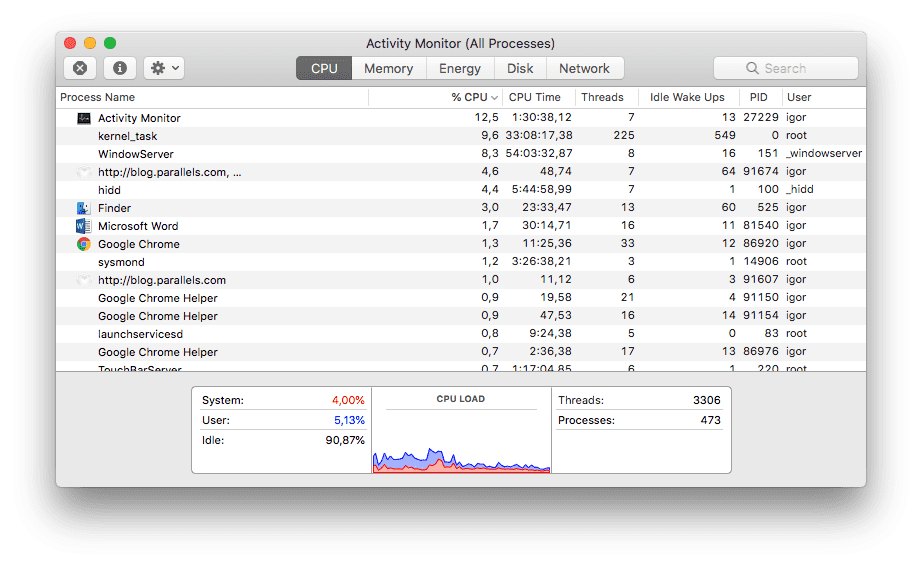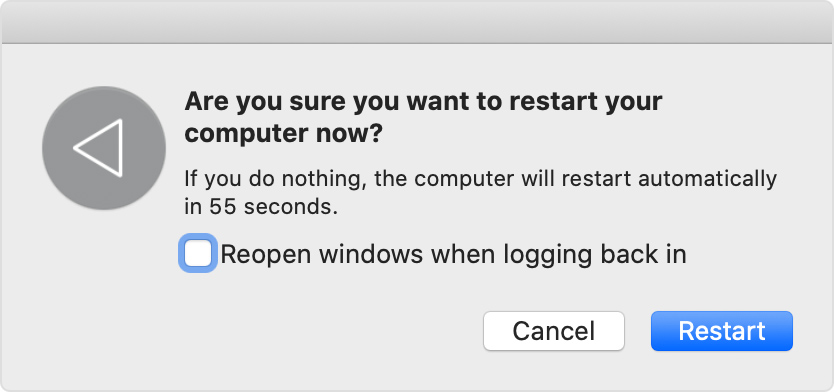- Force Quit Mac App
- How To Temporarily Quit Background Apps Mac Free
- How To Temporarily Quit Background Apps Mac
Knowing what background apps and processes that are running is always useful to know. In this guide, we'll show you how to view, Force Quit and even find detailed information about your applications. Keyboard Shortcut to Force Quit Apps on Mac. This is perhaps the easiest and most powerful. A Mac app has its menu bar located at the top of screen that allows you to access different options of the app. To quit an app from the Menu Bar, click on the app’s name from the Menu Bar and select Quit option from the drop-down menu. Open the Apple menu. It's the black Apple on icon in the upper-left corner of the screen. 2 Click on Force Quit toward the middle of the menu.
Before trying the steps below, please disable all programs temporarily, either manually or by performing a
Force Quit Mac App
clean boot of your system:

| Fullscreen overlays | Overwolf |
| Hardware monitoring software | MSI Afterburner, Riva Tuner |
| Peer-to-Peer software | BitTorrent, uTorrent |
| RGB Controllers or game optimisers | Razer Synapse, SteelSeries Engine |
| Streaming application | OBS, XSplit Gamecaster |
| Software impacting applications | f.lux, Nexus Launcher |
| VPN software | Hamachi |
| Video chat services | Skype |
| Virtualising software | Vmware |
| VoIP applications | Discord, TeamSpeak |
We also recommend disabling experimental features available through NVIDIA GeForce Experience and Radeon Settings.
Do not hesitate to contact us if you have any other questions.
Have you ever been in a situation wherein you were leisurely listening to a chill music, watching a new episode of your favorite TV series, or frantically adding finishing touches to your art document on your Mac just to reach your deadline when the app you are currently using stopped working and it won’t properly reboot? I know, it’s frustrating, and it happens. What is even more frustrating is that you need to start over, wasting your time and energy. This happens to any type of device and it can even happen to a reliable device like Mac. So what do you do if the Mac application you’re using suddenly stops responding? How do you close an app that won’t quit normally?
Why Do Applications Stop Responding?
The best way to close an app is by choosing Quit from the app’s menu. Another way to close an app is by pressing Command + Q but sometimes when we’re running multiple apps, the screen would somehow freeze and the applications would stop responding to the quit command. There are several reasons why apps stop responding and it could be one or a combination of these reasons:
- Background apps stopped working. This happens when the apps that are running in the background encountered a glitch and stopped working. These background apps are automatically launched when you start your Mac. You can prevent this scenario by customizing your startup options and disabling the apps that you don’t need.
- Too many applications and processes are simultaneously running. If you are using multiple windows, it will lead to your computer working in sluggish rate and sometimes poor-response time. And if you are wondering how many applications can you run at the same time? It’s hard to say because each application has different system requirement and will depend on the hardware capacity of your Mac.
- Too much junk. If your system is filled with old documents, temporary files, unnecessary cache, and all sorts of trash, you’ll find it hard to run even a simple program to make it a habit to clean up your Mac with a 3rd party cleaning tool to boost its performance.
How Do You Force Quit Mac Apps?
If you have been waiting far too long for the app to respond but nothing is happening the next best thing to do is Force Quit the app. Here are some ways to do that:
- Click outside of the program that has stopped responding.
- Find the application’s icon on the Dock. Right-click on the icon.
- Hold down Options until the Quit turns to Force Quit.
- Click Force Quit.

This will close the applications and you can just restart the app to check if the problem has been resolved but if your whole Desktop or Dock is unresponsive, you can bring up the Force Quit dialog by following these steps:
How To Temporarily Quit Background Apps Mac Free
- Press Options + Command + Escape. A window will pop up with a list of running programs.
- Select the applications that are not responsive.
- Click Force Quit.
At times, the cause of the problem is a program running in the background. To stop a program from running, follow these steps:
- Open Activity Monitor through Spotlight.
- You can see a lot of processes that you can sort by % CPU or % Memory.
- Find the process you want to close.
- Click the close button.
However, with all the steps you’ve taken, what if your Mac becomes unresponsive? If you can still save your files and close all apps on Mac, do so immediately. If not, you might not have the opportunity later because you have to reboot your Mac.
To reboot, follow these steps:

How To Temporarily Quit Background Apps Mac
- Click Control + Power button or press and hold the Power button for 1-2 seconds. This will bring up the Restart/Sleep/Shutdown dialog box instantly.
- Shut Down is selected by default.
If this doesn’t work, you can do a force reboot of your Mac by pressing down Command + Control + Power. This will shut down and restart your Mac immediately and you won’t have the chance to save your work.
See more information about Outbyte and uninstall instructions. Please review EULA and Privacy Policy.
